

OVER the years, Kevin documented hotels that had direct connections to underground transit, such as the Knickerbocker in Times Square, Waldorf-Astoria’s private track, Pennsylvania Hotel’s subway entrance, and Clark Street station in Brooklyn Heights.
Then there’s the hotel that appeared in more movies than I can remember and with four-figure fees per night, The Plaza at the southeast corner of Central Park is certainly not “Forgotten.” It stands next to the Fifth Avenue-59th Street station on the N, R, W lines. At the station’s western tip, a passageway has a sign showing the way to Plaza Hotel.
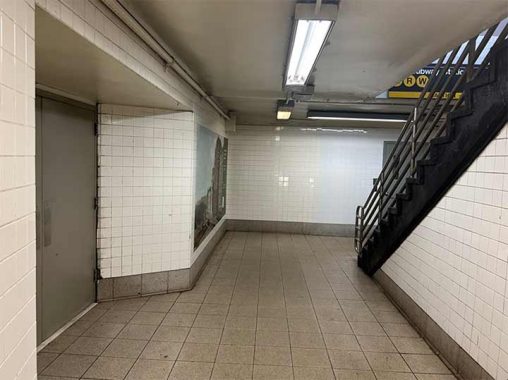
But if there is a direct way to access the hotel avoiding the outdoors, it is not possible for the public. Short of the staircase to the street is a locked double door next to a poster of Grand Army Plaza at the turn of the 20th century, and a smaller door with a security camera used by hotel employees.
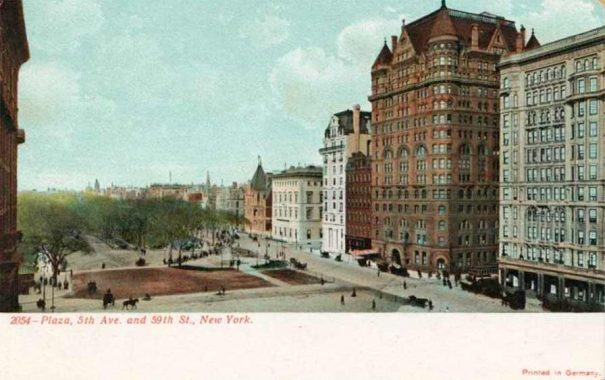
Between the large and small doors, the poster is an enlarged postcard from the NYPL collection, dated 1905-1914, looking north from Grand Army Plaza. From left to right are the Savoy Hotel, the earlier version of Hotel Netherland with its turrets, and the four-story Metropolitan Club that still stands today. The monument in the plaza honoring General William Sherman was installed in 1903.
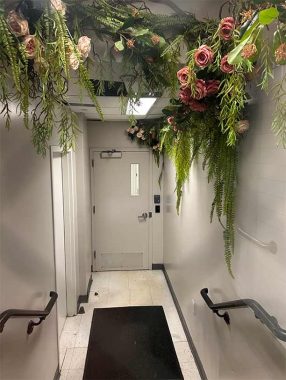
Unable to proceed further and not wishing to risk arrest, the best view of this secret tunnel is through the glass window on this door, which has a decorated vestibule leading to a second door.
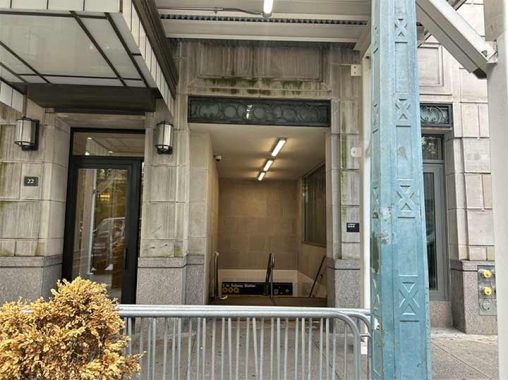
The public entrance to this passageway is 22 Central Park South, the landmarked annex of the Plaza Hotel that is composed of condo apartments.
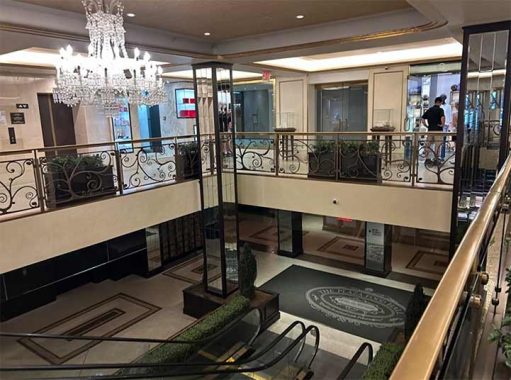
Seeking another entrance to the Plaza Hotel’s subway connection, I took a look at its southern entrance on W. 58th Street, which was developed in 2012 as The Shops at The Plaza. Unfortunately, the much-hyped food hall in the basement closed during Covid and has yet to reopen. Similarly, other food halls across the city, including The Market Line beneath Essex Market also closed recently. On an earlier visit to the Plaza Hotel’s basement, I did not find the connection between the food hall and the employees-only tunnel.
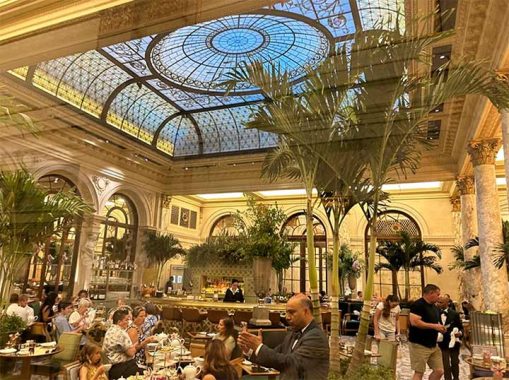
The hotel has interior and exterior landmark designations, with a detailed report on its architectural features, so there’s not much to see here that’s “forgotten.” The Palm Court appears original to 1907, but the glass dome above is a replica of the original stained glass skylight. In 1944, a flat ceiling was installed here with air conditioning equipment on the roof. Artificial lights illuminate the new dome that was installed in 2013.
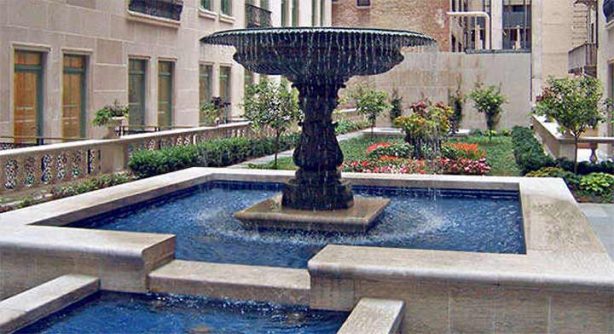
Above the air conditioning units is an interior courtyard accessible to the guests on the fifth floor. I could not make my way there so here’s a photo from Delta Fountains, which installed the water features here. The courtyard’s design is reminiscent of the Channel Gardens at Rockefeller Center, shielded from the noise of the streets, with little sunlight from above.
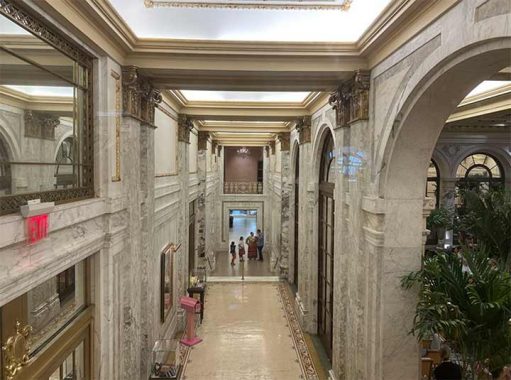
The hallways inside The Plaza are cavernous, inspired by the palaces of French king Louis XVI. When the hotel opened, its marble, furniture, and carpeting were imported from France. Architectural Digest has a detailed video on The Plaza’s interiors. There are many amenities for guests, but surprisingly this hotel never had a swimming pool.

The Forgotten element is that this Edwardian hotel had an Art Deco room designed in 1934 for the Gatsby crowd. The Persian Room had murals painted by Lillian Gaertner Palmedo. Her portfolio also included the Ziegfeld Theater and 80 Broad Street. This room was updated in 1950 by Henry Dreyfuss, with draperies designed by Dorothy Liebes. The room’s history and its famous guests are described in this book.
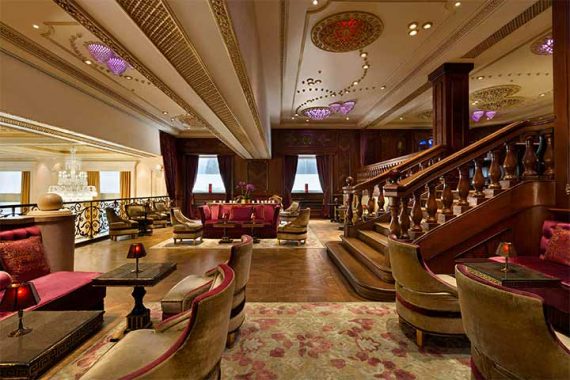
By 1975 the Persian Room was remade in the historical style of the hotel as The Rose Club. Sadly, Palmedo’s murals disappeared with this redesign. Perhaps my friend Michael Perlman can get on this case, as he successfully tracked down a long-lost Andre Durenceau mural that used to be in Queens.
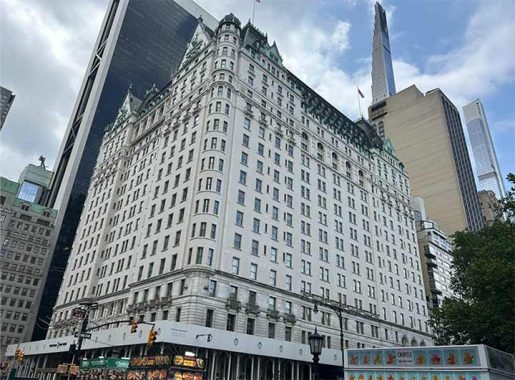
The exterior preserves Henry J. Hardenbergh’s design, hiding the economic transformation in which some of the rooms became condos with a separate entrance on Central Park South. Facing the Pulitzer Fountain, it is the last of a set of beaux arts buildings at Grand Army Plaza, with the mansion of Cornelius Vanderbilt II replaced by Bergdorf Goodman, and the Savoy Hotel replaced by the General Motors Building.

The Pulitzer Fountain was installed at this plaza in 1916, but there was an earlier waterway here, as seen in this photo from 1870 in the NYPL collection. De Voor’s Mill Stream flowed here on its way to Turtle Bay on the East River. The first Plaza Hotel was built here in 1890, and replaced by the present building in 1907.
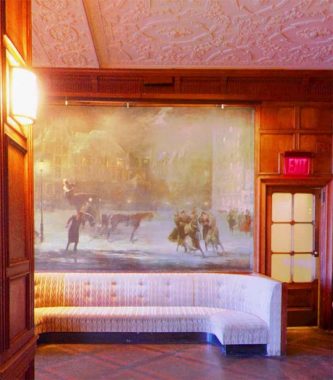
Scenes of Grand Army Plaza as it was in the hotel’s early years appear in three interior murals at its Oak Bar by Ashcan artist Everett Shinn.
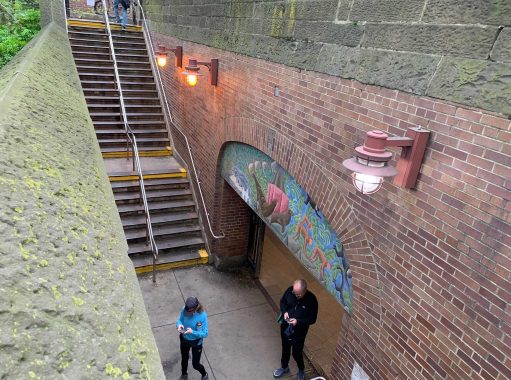
Returning to the subway station’s western end, it has an entrance across from the Plaza Hotel bordering on Central Park. With its steep staircase, I’ve wondered why this entrance does not directly connect with Central Park. Perhaps to keep the wildlife out of the station, but the mosaics in the station depict the flora and fauna of the park and its zoo, which is a short walk from this station.
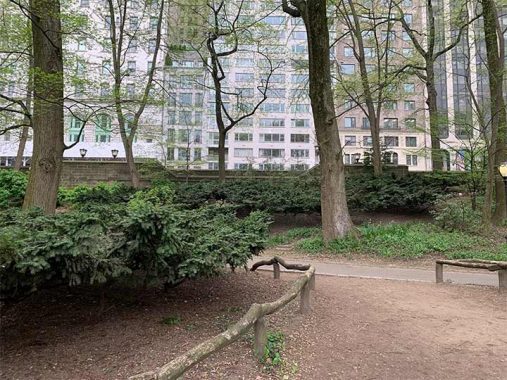
Extending the subway entrance into the park would also mean the removal of two trees. When any new element is introduced to this park, every detail is scrutinized, so I don’t expect the MTA and Central Park Conservancy to consider my idea.
Sergey Kadinsky is the author of Hidden Waters of New York City: A History and Guide to 101 Forgotten Lakes, Ponds, Creeks, and Streams in the Five Boroughs (2016, Countryman Press), adjunct history professor at Touro University and the webmaster of Hidden Waters Blog.
Check out the ForgottenBook, take a look at the gift shop. As always, “comment…as you see fit.” I earn a small payment when you click on any ad on the site.
7/19/25

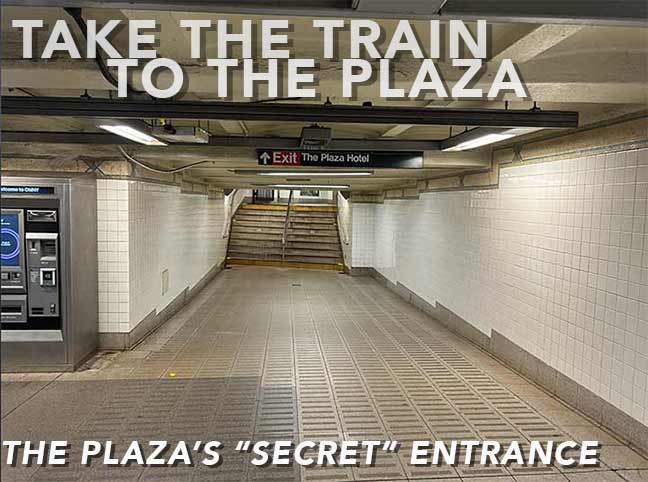
4 comments
The two tourists, with their heads immediately buried in their phones upon exiting the bad ol’ subway, *could* have done a better job of blocking the entrance… (Penultimate pic.)
I wonder if Eloise, the fictional young girl who lived at The Plaza, ever took the R or W trains if she needed to travel out of the hotel?
The books of her exploits were written in the mid-1950s so if she did take the subway she would have taken the 2 train, which is old BMT numbering before the TA renamed it the RR in 1961 (or the BMT Broadway local as it was known). Or the 1 train (Brighton Express which ran during rush hours). The W didn’t come along until 2001.
Back in the 1990’s the Oak Bar was one of the upscale watering holes in which Cyprians* would slip tranquilizers into wealthy men’s drinks, later to relieve them of their wallets and other valuables.
* = a charming British expression, not to be confused with Cypriot. Though I suppose you could have a Cypriot Cyprian.